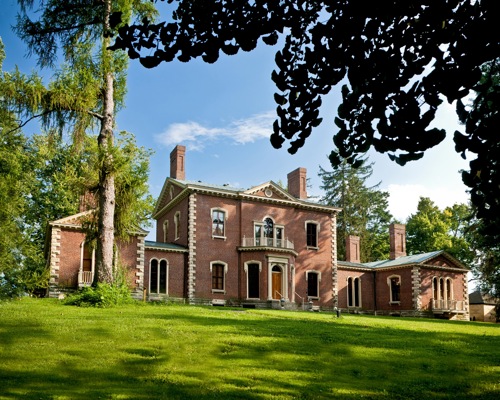
Courtesy Ashland Estate
Have you ever picked up a lottery ticket hoping to strike it rich?
Even though winning the jackpot is practically a mathematical impossibility, dreaming about living where money is no obstacle is fun. Perhaps those same dreams make enjoyable stepping into the lives of history’s wealthy.
Touring mansions and plantations gives travelers the opportunity to see Dixie’s luxurious history up close. The South has numerous mansions that charm visitors with their opulent beauty and stately grace. Here are six you don’t want to miss.
Ashland Estate
Lexington, Kentucky
Among the important statesmen in American history are Abraham Lincoln, Thomas Jefferson, and George Washington, but few realize Henry Clay’s influence on the foundations of our country.
“Clay was intricately involved in activities that helped in the preservation of the Union and management of the slave question. His Compromise of 1850 was pivotal in the history of America because it postponed the Civil War,” said Timothy Jordan, executive director of Ashland, The Henry Clay Estate. “Had he become president in 1844, many historians believe he could have done things that would have avoided the Civil War.”
Clay’s home, named Ashland for the many ash trees on the property and used in the construction, was a working farm with more than 600 acres for crops and livestock and 60 slaves at its apex. Ashland even introduced Thoroughbred horse farming and breeding to the region, an industry that has become central to Kentucky’s identity.
Today, the property is a 17-acre oasis of woodlands and open meadows in central Lexington with the mansion as its focal point. Inside, groups can see exhibits that tell Clay’s story as a successful farmer, lawyer and politician and that portray his important role in American political history. Clay was an admirer of Washington and considered a goblet used by the general at Valley Forge to be his prized possession. The goblet is now on display for visitors to see.
The Federal-style house’s central two-story core was constructed in 1805; then Clay contracted with Benjamin Latrobe, the architect of the U.S. Capitol, to design the two one-story wings. The New Madrid earthquake of 1812 caused extensive damage to the home, so Clay’s son, James Clay, conducted an extensive renovation using the original floor plan and materials as a monument to his father but adding Victorian elements.
The property also includes structures such as the keepers cottage, the smoke/carriage house, and the ice house/dairy cellar system.
www.henryclay.org
Biltmore Estate
Asheville, North Carolina
It would be impossible to talk about iconic Southern homes without mentioning the Biltmore Estate. The 250-room dazzler was designed by Richard Morris Hunt and built in 1895 by George Washington Vanderbilt II, the grandson of Commodore Vanderbilt. The Biltmore is still the largest privately owned house in the United States and is filled with priceless art, antiques, and other priceless objects. Not bad for a summer home.
Contrary to popular belief, Vanderbilt didn’t set out to create the largest home in the United States: He simply wanted to re-create a home in the style of working country estates of Europe. That means Biltmore isn’t just big, it is beautiful.
“One of my favorite views on the property is offered from the Loggia,” said Marissa Jamison, public relations manager for the Biltmore. “The Loggia is an open-air porch with soaring archways above an ornate balcony. It overlooks the Biltmore’s deer park, with long-range views of the Blue Ridge Mountains as far as the eye can see.”
The scenery is as breathtaking outside as inside, with 8,000 acres of grounds and 75 acres of formal gardens. The grounds are particularly beautiful during the spring Festival of Flowers, when more than 100,000 tulips and other spring bulbs turn the Biltmore’s grounds into carpets of color.
Following Vanderbilt’s vision, the Biltmore remains a working farm with a winery, a creamery and a horse barn.











